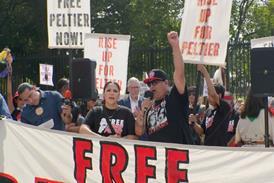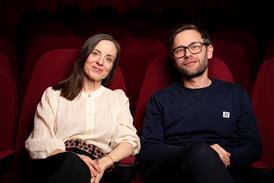Writer and director Maryam Keshavarz talks about Circumstance, her directorial debut that stars newcomers Nikohl Boosheri, Sarah Kazemy and Reza Sixo Safai. The film premiered at Sundance earlier this year where it won the audience award.
Iranian-American Keshavarz grew up with “one foot in the US and the other in Iran” and has crafted a coming-of-age story about Iranian youth culture that leaves her “knowing that making this film might mean never going back to Iran.”
dGenerate Film’s Karen Chien and Bago Pictures’ Melissa M Lee co-produced with Keshvarz. Roadside Attractions and Participant Media will release the film on Aug 26 in select theatres.
What is Circumstance about?
Circumstance is about an affluent Tehrani family that is broken apart when a brother and sister start to move in different directions. On another level it is about a brother and sister that used to be very close, who end up falling in love with the same girl.
Where did you get your inspiration for writing this script?
It started as my thesis project at NYU when I was doing my Masters. I had a professor that always said to write what you know. I spent every summer back in Iran. It was my exploration with my cousins with the underground parties that started in the 80s and the 90s.
In terms of the family structure, the liberal father that is trying to keep the family together in a repressive environment is based on my uncle. He had been living in the US in Massachusetts. When the revolution happened he was caught up with what was happening in Iran and went back. He ended up being stuck in Iran and could not come back. He is very liberal and I thought about what it would be like for him to be a liberal person and raise a family in a place such as Iran after the war. It started from some seeds that were very personal.
How were you able to finance the film?
Kodak was one of the sponsors on the film, for example. We also received a lot of institutional support from the Sundance Institute, Film Independent, Women In Film and the San Francisco Film Society. And private financing.
What kinds of opportunities are there for filmmakers in Iran? What were some of the difficulties you came across in the filming process?
I can’t really speak for filmmaking in Iran because I never attempted to make the film in Iran. My brother [Hossein Keshavarz]’s film, Dog Sweat, for instance addresses some of the same issues as my film does but since it was shot in Iran it has to be treated in a different way. I never intended to work on films in Iran. On one level it is really interesting because the whole issue of censorship has created a whole language of cinema in Iran. All of these beautiful stories that came out that became the hallmark of Iranian cinema grew out of censorship.
That has changed over time in Iran with filmmakers like [Jafar] Panahi that deal with contemporary urban issues. They’re directly combating censorship they are moving away from symbolism and children’s stories and dealing with urban issues. I admire that and watch all the films from inside Iran but I am not really part of that system.
For me I wanted to shoot in the Middle East. The hardest part was trying to find a place to shoot the film. For instance, I could shoot in Turkey but it wouldn’t work because of the signs and lettering in the country. The look didn’t work at all. Lebanon [where we filmed] was hard to shoot in [in terms of finding scenery that looked similar to Iran.] I was more adamant about shooting in the Middle East and I think we did a good job. I went to Iran and photographed where it would take place and I spent extensive time in preproduction to find the right creek [river] architecture and make it as close as possible to real Iran.
How were you able to find the actors?
They were amazing. For the lead role I auditioned over 1,000 girls in 10 cities around the world. I did traditional castings and non-traditional castings in schools and communities centers. I did Skype casting sessions, video auditions and anything else you can imagine. Nicole, who plays Atefeh, came from a small town in Vancouver. Sarah, who played Shirin, came from Paris. I was shocked with their auditions, more than anything when they auditioned together. There were three finalists for each of the three lead roles and the final callbacks were in Toronto.
Can you recall the world premiere at Sundance and your feelings when Roadside Attractions acquired the film?
It was crazy. You work in such isolation. I edited the film in Chile and ended up with the same editor who is Chilean. Then the 8.8 earthquake happened in Chile in the middle of editing. So we had to move the post editing to LA. That alone was very traumatic. Sundance was the first time I got to see it finished. I could not watch the film. I was watching the audience. It was so crazy because we had a standing ovation and the Sundance audience was so smart and so engaged. They are an active audience reading into every scene. It was so exciting.
We had a bidding war for our film. It was a dream come true for me. Participant produce films and we are their first foreign language acquisition. When they came to the film and liked it, the producers didn’t think twice about it.
What can we expect down the line from Maryam Kesharavarz?
Right now, I’m working on a trilogy about Iran. It is a TV series about the last harems in Iran. It is about the women in the harems who were actually running the government and dealing with those in power. I’m also far along a script about the Iranian revolution about four best friends and how they were affected by the revolution. I’ve had a lot of offers to direct other scripts and we’ll see what happens with those.





















No comments yet